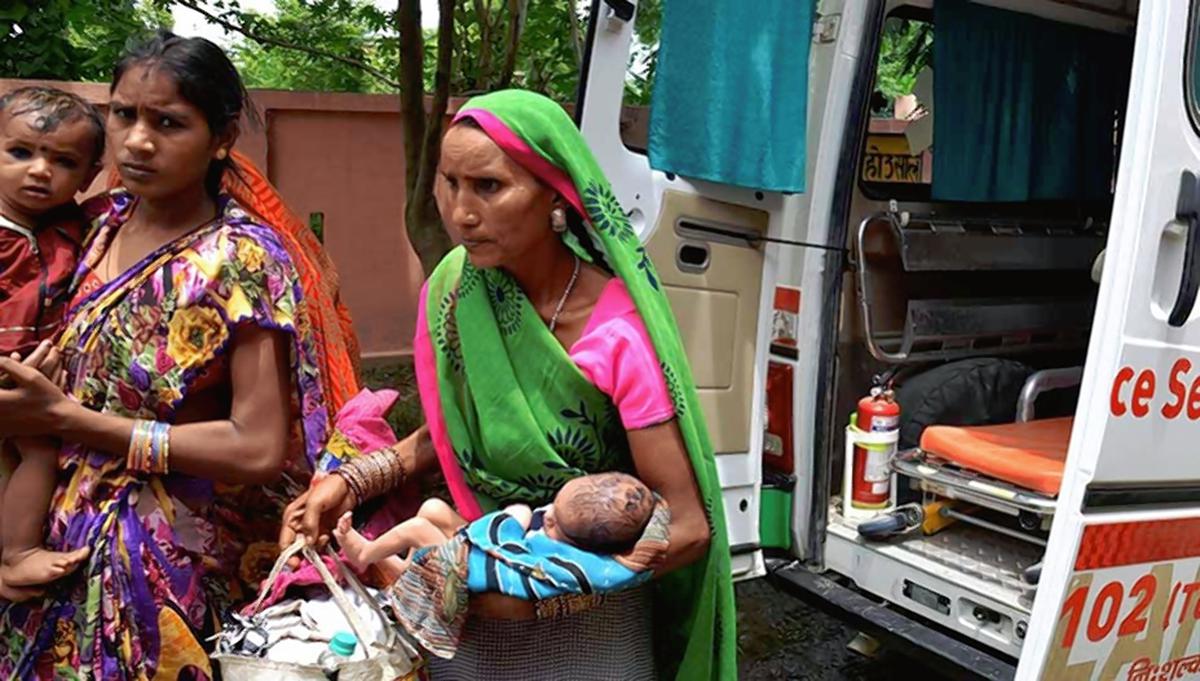Context
-
According to the latest report of the Registrar General of India (RGI), the Maternal Mortality Ratio (MMR) in the country has reduced by 10 points – from 113 in 2016-18 to 103 in 2017-19.
About Maternal Mortality Ratio (MMR)
- MMR is defined as the number of maternal deaths during a given time period per 100,000 live births during the same time period.
Key Findings
- States like Kerala, Maharashtra and Uttar Pradesh have shown more than 15% decline in the MMR, while Jharkhand, Rajasthan, Bihar, Punjab, Telangana and Andhra Pradesh have shown a decline between 10-15%.
- With this steady decline, India is on track to achieve the United Nation’s Sustainable Development Goal (SDG) target to reduce the maternal mortality ratio to less than 70 per 100,000 live births by 2030.

Photo Credit: Rajeev Bhatt - Kerala, Maharashtra, Telangana, Tamil Nadu, Andhra Pradesh, and Jharkhand have already achieved the SDG target, with the number of deaths as low as 30 in some states.
What are the causes of maternal mortality?
- Maternal mortality is a measure of the reproductive health of women in an area.
- The World Health Organisation describes maternal death as a “female death from any cause related to or aggravated by the pregnancy or its management, excluding accidental or incidental causes, during pregnancy and childbirth or within 42 days of termination of pregnancy, irrespective of the duration and site of the pregnancy”.
- According to the United Nations Children’s Fund (UNICEF), the major causes for maternal mortality are severe bleeding, infections, high blood pressure during pregnancy, anaemia, complications from delivery, and unsafe abortions. A large number of these issues can be alleviated with proper medical support, which is sometimes not easy to access. These complications are a result of compounded social, cultural and medical factors.
- Early pregnancy between 15 and 19 years of age, when the adolescent girls are themselves growing, can lead to numerous complications that often result in the death of the mother. Child marriage, still followed in some parts of India even though it has been declared illegal, aggravates cases of pregnancy-related complications in young girls.
- Other causes that result in maternal deaths are lack of necessary medical care during childbirth or financial constraints to access medical care.
How can MMR be reduced?
- Regular collection and review of data from Maternal Death Surveillance and Response (MDSR) has helped the government plan and implement corrective measures to reduce maternal mortality in India over the years.
- The government of India has developed an elaborate system of analysing the data collected. The collection of data is a structured procedure starting at the block level and moving up to districts and states. States have been structured into three groups based on the frequency of maternal deaths: high MMR, moderately high MMR and low MMR. The government has different guidelines in place to reduce the MMR in these individual groups.
- Improving and establishing healthcare infrastructure in rural and remote areas can significantly reduce MMR in India.
- Creating awareness in society is also an important step to reduce maternal mortality since many women are unable to access adequate healthcare facilities due to cultural practices or societal taboos.
Reference:
Visit Abhiyan PEDIA (One of the Most Followed / Recommended) for UPSC Revisions: Click Here
IAS Abhiyan is now on Telegram: Click on the Below link to Join our Channels to stay Updated
IAS Abhiyan Official: Click Here to Join
For UPSC Mains Value Edition (Facts, Quotes, Best Practices, Case Studies): Click Here to Join
